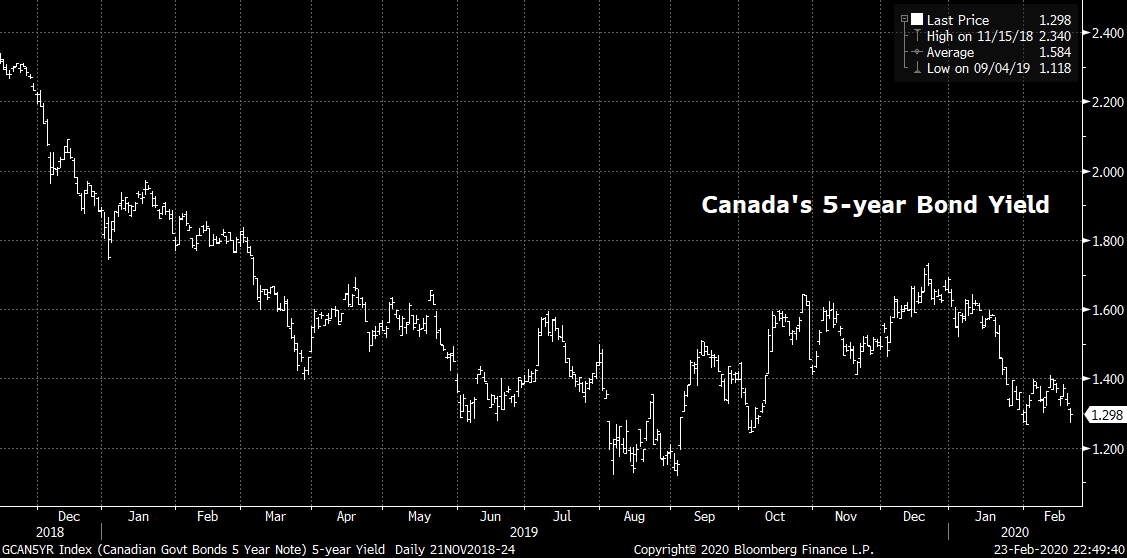Some experts downplayed the effects of the new mortgage stress test last week. The roughly 3% improvement in home-buying power—a result of the government lowering the qualifying rate—apparently didn’t impress them.
And while we’re loath to overplay the new stress test’s significance, it seems that some analysts’ attempts to quantify the housing impact may be lacking.
Quick Explainer: Mortgage borrowers must prove they can afford a higher rate than what they actually pay. That minimum stress test rate is currently 5.19%. Other things equal, the government’s new stress test calculation could effectively lower it by about 30 basis points, starting April 6. That’s when the new benchmark takes effect. At that time, the minimum qualifying rate will be set at the weekly insured 5-year fixed mortgage rate from applications submitted to Canada’s three default insurers. By the way, we hear the government has been working with CMHC for a number of weeks in order to obtain this rate data, but it reportedly doesn’t have it yet from the private insurers.
As reported last week, the immediate effect of easing the stress test from 5.19% to 4.89% shouldn’t be the only consideration.
One must also consider what happens if:
- Rates decline
- People believe this change is bullish for housing overall.
If/When Rates Drop
Once Canada’s 5-year bond yield falls to new multi-year lows—and it will in due time—the significance of the new stress test calculation could become vividly apparent.
The reason: Big Bank posted 5-year rates won’t adjust as quickly as the new stress test rate. Banks have an economic incentive to keep posted 5-year fixed rates elevated longer. Among other things, doing so generates more penalty revenue. And by not cutting posted rates as quickly, some banks avoid having to reset rates lower for borrowers who are approved at higher rates and waiting to close.
For these reasons, it’s likely that as Canada’s 5-year yield falls, the spread between 5-year posted rates and the median insured 5-year fixed rate will widen. That widening would, at least temporarily, improve borrowers’ buying power (relative to today) more than the 3% being quoted in the media currently. And it could magnify normal spring housing demand.
Explainer: The 5-year bond yield generally guides fixed mortgage rates because lenders source their fixed-rate funding from the bond (fixed income) market.
Market Sentiment Boost
The latest data shows national average home prices rising at the fastest pace since mid-2016.
Supply is “historically tight” says CREA. Resale inventory is at its lowest point since the summer of 2007, before the mortgage crisis. “This measure of market balance is now a full month below its long-term average of 5.2 months…,” CREA adds.
If mortgage rates fall further heading into spring, it could easily increase buying power 4%, 5%, 6% or more.
If you don’t think that matters, know that 60% of homebuyers (65% of first-time buyers) bought the highest-priced home they could afford, according to the latest CMHC Mortgage Consumer Survey.
A small percentage of buyers will now undoubtedly wait until April 6 to purchase. In doing so, they could get a $10,000 to $50,000+ boost to their buying power depending on their incomes, debt loads, etc. How much of that “benefit” is offset by higher home prices is another matter.
Meanwhile, some buyers who are not constrained by the stress test will recognize what’s about to happen and try to buy ahead of April 6.
Where it gets interesting is on the supply side. Sellers aren’t dumb. Many of those planning to sell will wait until April list. Their strategy being to avail themselves of: (A) additional spring demand in April/May, and (B) new demand from the stress test (starting April 6).
The revised stress test will lift price expectations for both buyers and sellers. And given that home prices are set by the last (“marginal”) buyer, the additional buying power could be material. That is, assuming the housing market is not derailed by an economic crisis of some sort.
Of course, if rates unexpectedly rise this spring, the impact will be less consequential. But if rates drop, this policy tweak will absolutely translate into greater price gains in strong markets. In that scenario, said stress test changes will not be “insignificant” and will not affect only the “absolute margin.”

 log in
log in

2 Comments
I don’t know which would pummel rates more, a virus pandemic of Bernie Sanders winning the US presidency.
A Bernie Sanders win would be a nuclear bomb for the bond market. Good for borrowers though.